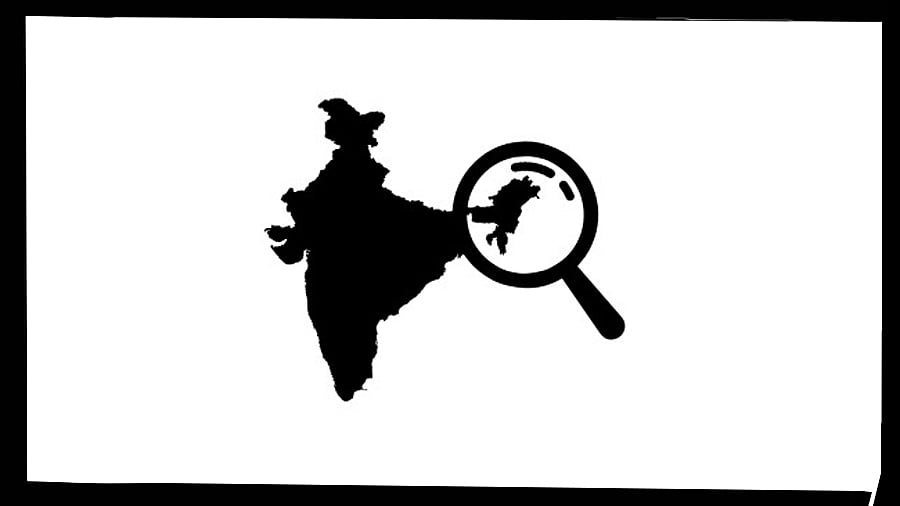
Manipur, the jewelled land’ of north-east India, has been having a rough few months. Ethnic violence has troubled the state, taking lives, causing destruction of property, and halting economic activity. While the causes of the violence are many, the inverse relationship between economic development and ethnic or communal violence is well known: where there is economic development resulting
in employment-generating activities, income, and general prosperity,
there are fewer chances of inter-community violence.
CARE Edge Ratings has ranked the states of India across seven pillars (economic, fiscal, social, infrastructure, financial inclusion, environment, and governance). The methodology adopted assigns a higher weight to economic criteria, the logic being that a sound economic performance has a trickle-down effect on the rest of the pillars, substantiating the point made earlier. All the states in the North East, with the exception of Sikkim, which has a score of 46.8, have, as per this study, a composite score of less than 40. The total GST revenue in July 2023 for the eight north-eastern states was Rs 1,948 crore, and if Assam is removed
from the mix, the revenue reduces to Rs 765 crore.
This background is necessary for a greater appreciation of the report by the Parliamentary Standing Committee on Commerce on ‘Development of Trade and Industries in the North Eastern Region,’ submitted in August 2023. This report could not have come out at a more appropriate time.
The Standing Committee Report observes that there is poor inter-state and intra-state connectivity ‘impeding‘ industrial development in the North East Region. The report has recommended constructing new state highways, widening existing roads, creating air cargo handling and cold storage facilities at airports, and exploring the feasibility of using national waterways. Infrastructure facilitating the easy movement of goods and people can serve as a critical lifeline; it connects producers to consumers, urban to rural areas, and spurs economic activity.
The report has highlighted the fact that, in the absence of land available for transfer to non-tribals, industrial development suffers. This is a recommendation that should be handled sensitively. It has bemoaned the fact that five Special Economic Zones (SEZ) were approved for the region, four have been notified, and none, repeat, none, are operational. This is a sad situation for a region as sensitive and vast as the North East. The committee has recommended setting up even more SEZs in the region. Hopefully, before this is done, the existing SEZs will be activated.
The report highlights the fact that the region ought to be taking advantage of its geographical location and increasing trade with the Association of South Asian Nations (ASEAN). This will be in sync with the Centre’s Look East Policy (later rechristened Act East Policy), which seeks to look at Southeast Asia and create trade opportunities for the North East.
The report highlights the fact that there are huge opportunities in the bamboo industry that have not been explored. It suggests the need for formulating a national policy on bamboo. The absence of tourism facilities has also been pointed out, as has the fact that the region receives less than 1% of the total FDI in the country. It has been pointed out that there is huge potential to develop food processing industries given the surplus agricultural and horticultural produce in the region. It has recommended creating megafood parks and integrated cold chain facilities as key requirements to boost the food processing industry. The report mentions the fact that NER accounts for nearly 3% of micro, small, and medium enterprises (MSMEs) in the country but is not doing well due to a low credit deposit ratio.
We should not forget that there is an entire ministry—the Ministry of Development of the North Eastern Region (MDONER)—with the express task of being responsible for all matters relating to the planning, execution, and monitoring of development schemes and projects in the region. It has the ambitious vision, as per its website, of ‘transforming the North-East through development in a sustainable yet accelerated manner, affording comprehensive growth and access to ease of living to all its citizens’. It is a different matter that this Ministry, created specifically to take care of the development of the critical North East states, is based several thousand miles away in Delhi.
The budgetary allocation for the MDONER as per the budget estimates for 2023–24 is Rs 5,892 crore. While this is a substantial increase over the previous year’s budget, we should not lose sight that this is for the development of eight states—a meagre Rs 737 crore per state. For instance, Manipur has been allocated a total of 363.14 crore for the implementation of projects during the period 2020–2023 (up to June 2023), as per the reply to a July 2023 parliamentary question.
The strategic importance of the North East cannot be overemphasized. It shares borders with as many as five countries. It is connected by road to the rest of India by a mere twenty-twenty-five-kilometre corridor—the so-called chicken’s neck. With increased focus on the development of inland waterways and a closer relationship with Bangladesh, the dependence on roads to connect the NER with the mainland is reducing. Drug trafficking, small arms trafficking, and a hostile neighbourhood are challenges. Maintaining the balance between development and peace has been difficult. The government should act on these sound recommendations
of the Parliamentary Committee. The north-east is too important an area to be neglected.
(The writer is the former chairman of the Central Board of Indirect Taxes and Customs)